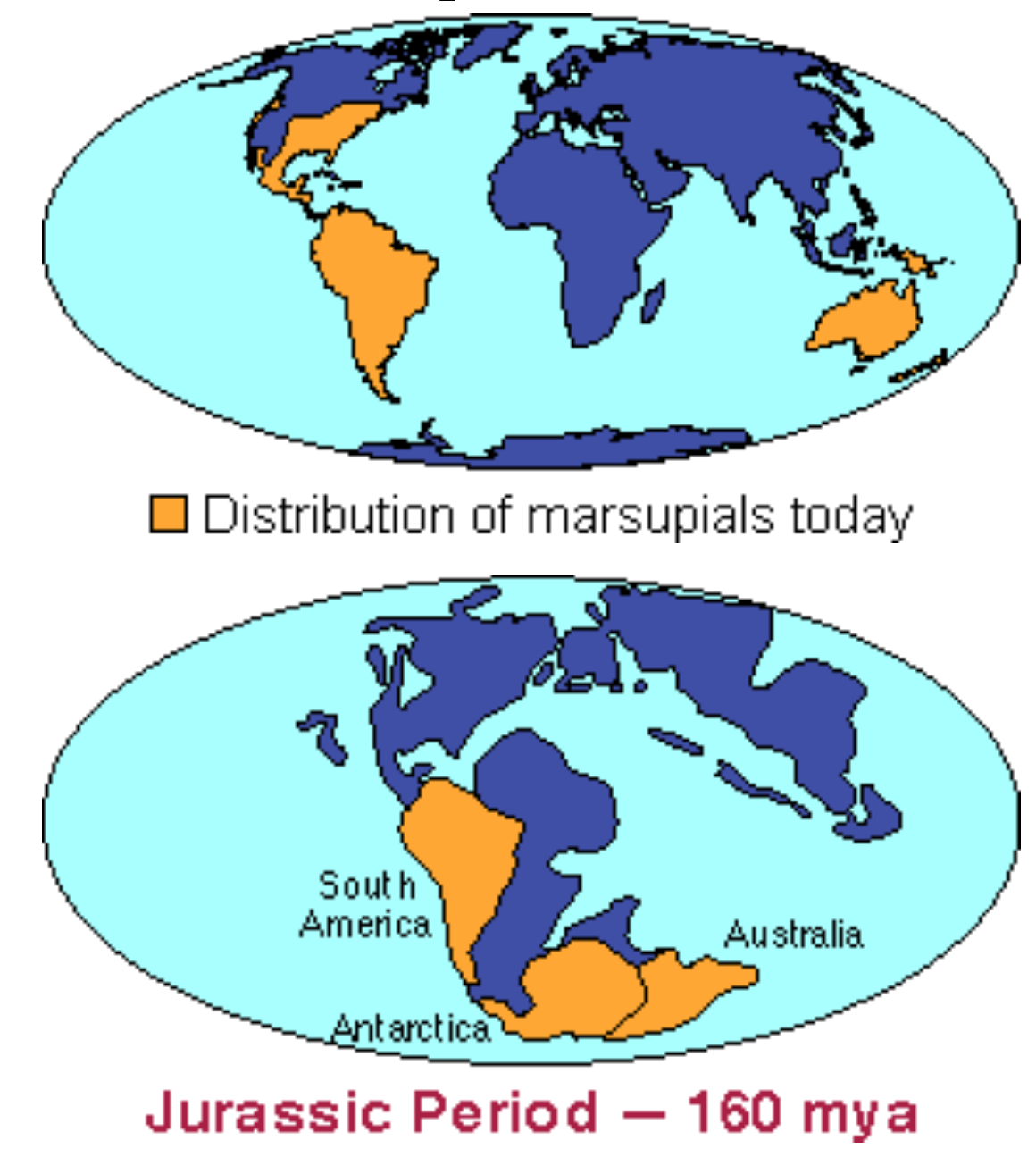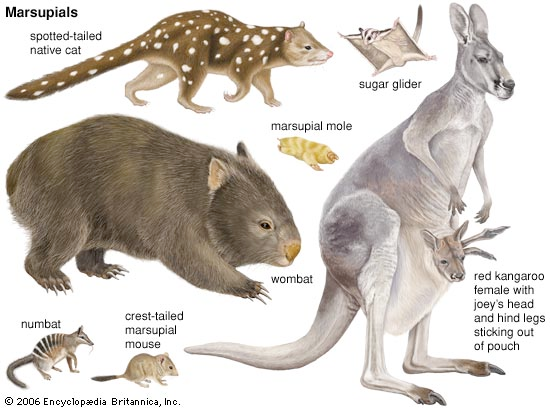2.7 How do we know evolution has occurred? Biogeography.
Biogeography
Biogeography, the study of the geographical distribution of living organisms, addresses several evolutionary questions: How many types of organisms exist? Why are some types of organisms (e.g. insects) more abundant than others (e.g. mammals)? Why do certain organisms live in some places and not others? Why do islands have such distinct biodiversity compared to the larger continents? Why aren’t there any polar bears in Antarctica? Why aren’t there any giraffes in Hawaii? And so on…
For example, an understanding of evolution helps us appreciate the otherwise-perplexing global distribution of marsupial mammals (Figure 2.8). Marsupials are mammals in which females transport their young in distinctive pouches throughout their early infancy. In contrast, placental mammals have placental gestation and young are born at a more developed stage. Marsupial mammals, such as kangaroos, opossums, wombats, and wallabies, occur in North and South America, Australia, and New Guinea, whereas the more-numerous placental mammals dominate the rest of the world. How can we explain these odd distribution patterns?

Knowledge of Earth’s history is key to biogeography and evolutionary understanding. Indeed, a consideration of continental drift—the movement of the continents, over geologic time, as a result of the movement of plates in Earth’s crust—is necessary to understand marsupial biogeography (Figure 2.8). We also know from fossil evidence that marsupials originated over 150 million years ago in China, at a time when the Asian and North American landmasses were joined. Marsupials dispersed to South America, and from there to Antarctica and Australia, both of which were attached to South America. When Australia, Antarctica, and South America drifted apart, each landmass carried a population of marsupial mammals. Over time, Australia’s marsupials evolved into the bandicoots, kangaroos, koalas, and other marsupials that inhabit the continent today. When Australia moved closer to Asia, about 15 million years ago, placental mammals such as rats and bats colonized the landmass.

Content on this page was originally published in The Evolution and Biology of Sex by Sehoya Cotner & Deena Wassenberg and has been expanded and updated by Katherine Furniss & Sarah Hammarlund in compliance with the original CC-BY-NC 4.0 license.

